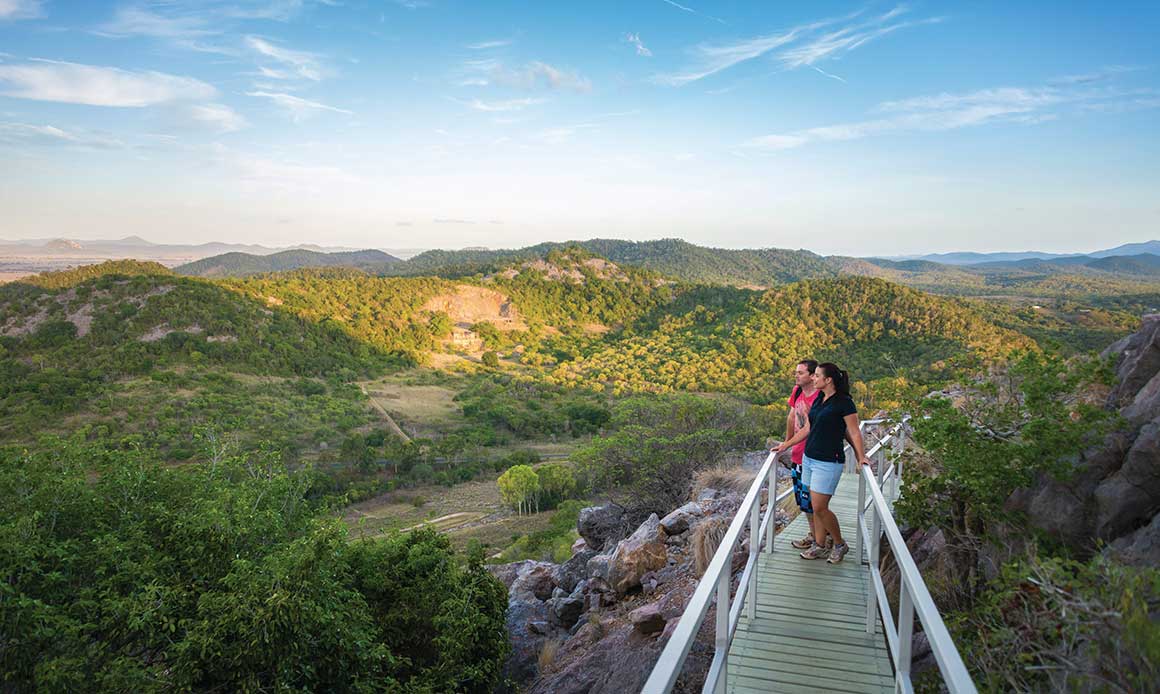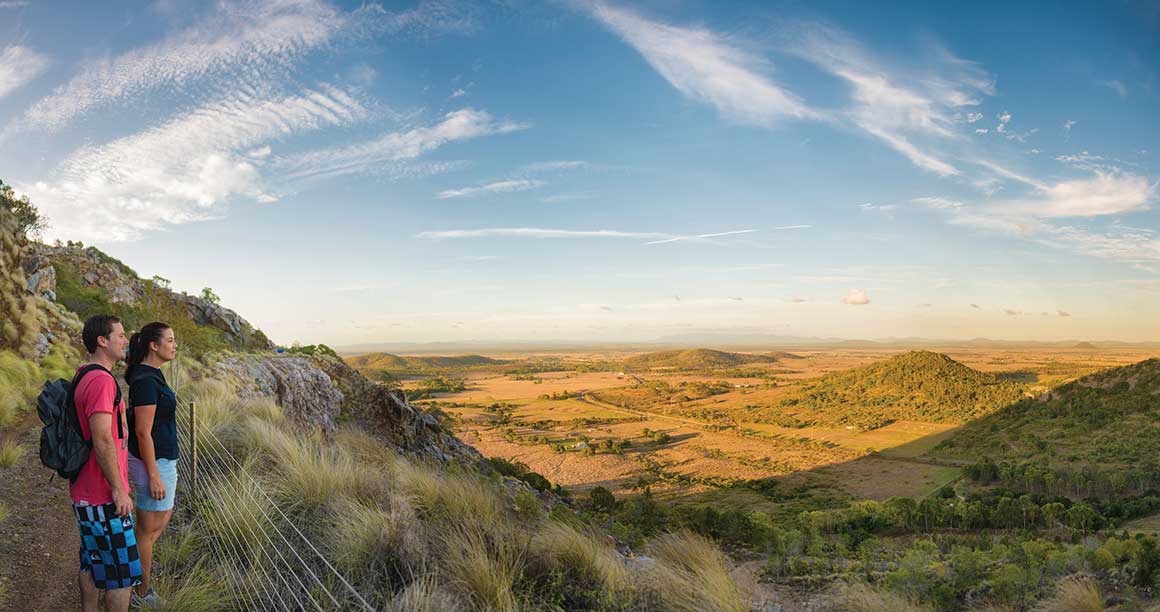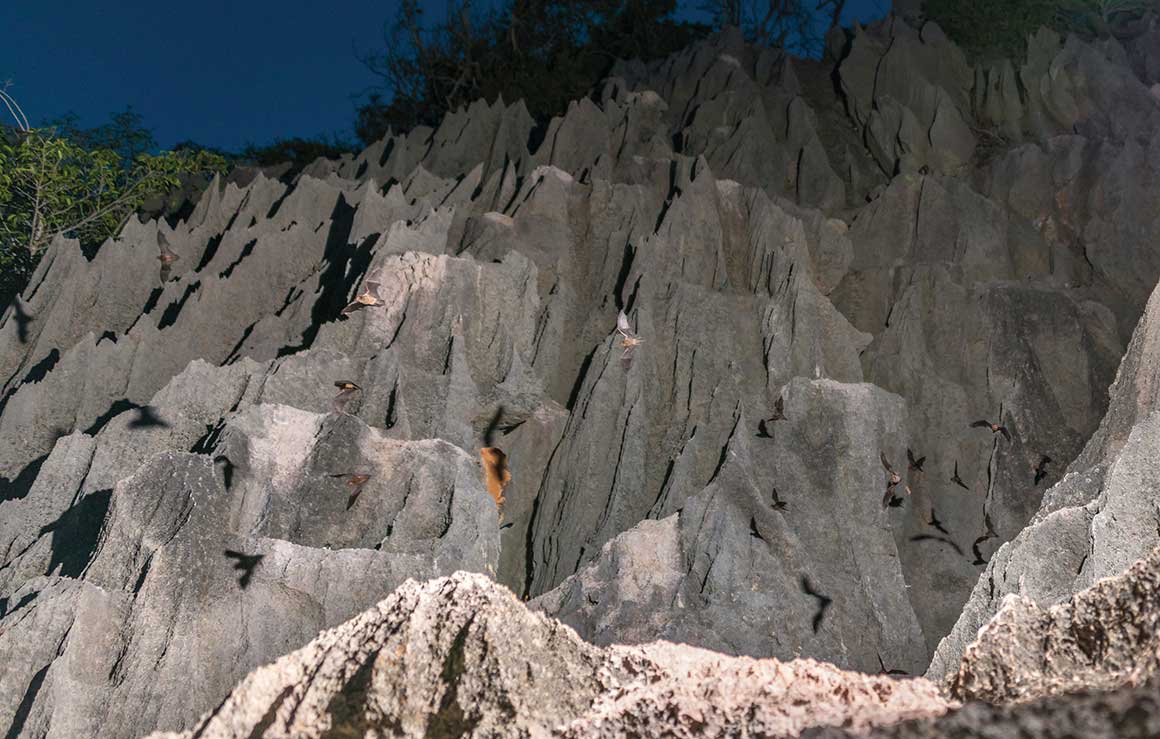- Categories:
- Regions:
Whether you’re wildlife enthusiasts, keen walkers, a family seeking special nature experiences, or simply curious and hungry for adventure of a different kind, Mount Etna Caves National Park is a 'must do'!
In an area noted for its limestone caves, Mount Etna is unique. Its caves and outcrops are home to little bent-wing bats and endangered ghost bats. Tiny, fast and the kind of ‘cute’ that only a mother could love, little bent-wing bats use Bat Cleft as a summer nursery—roosting by day in the caves then streaming out at night, leaving their young in the cave while they hunt for food. Like something out of Star Wars, they manoeuvre through trees to catch tiny insects flying in mid-air.
Only 25km north of Rockhampton, near The Caves township, you’ll happily spend a half day or longer here, picnicking, exploring on foot and spotting birds and other wildlife of this dry rainforest. And, if you time your visit for summer, you can join a Bat Cleft tour (December to mid-February) for a truly unforgettable experience!
Here’s how to best enjoy your trip to Mount Etna.
By day—walk, picnic and spot wildlife

Mount Etna walk | © Tourism and Events Queensland
Stroll along the 600m self-guided Cammoo circuit, exploring remnant dry rainforest clinging to the harsh limestone landscape. The first section of this walk is suitable for strollers and wheelchairs.
Enjoy a relaxing picnic at the Cammoo picnic area, where you can make good use of an electric barbecue, picnic tables and toilets.
As you kick back, keep an eye out for birdlife—the park is home to more than 75 species and you’ll easily see a variety of birds from the picnic area or along the walking tracks. You might also be lucky to spot brush-tailed rock-wallabies, brushtail possums, bandicoots and echidnas!

Mount Etna walk | © Tourism and Events Queensland
Are you up for a longer (uphill) hike? The 2.4km return Mount Etna walk takes you up to Bat Cleft. The first section winds steeply through dry rainforest where butterflies and birdlife bring colour and charm to your walk. Take a break where the big views begin, first overlooking the historic Pilkington Quarry and finally offering expansive views of Limestone Ridge, surrounding plains and distant mountain ranges
Park Ranger’s tip: Views are a great excuse to stop to catch your breath as the walk is quite strenuous! And it’s best to walk in the cooler months or early morning to avoid the heat!
If you visit during the bats' breeding season from 1 November to the end of February, you won’t be able to walk on the elevated boardwalk from Bench 9 to Bat Cleft because this final track section is closed to protect the bats. Never fear, you have a better option—a bat tour (Dec–mid-Feb)!
By night—join a Bat Cleft tour

Bats flying from limestone cave | © Tourism and Events Queensland
Now for the real highlight! Join a ranger-guided tour to see the little bent-wing bats of Mount Etna caves. Follow your guide up the 1.2km track—it is a bit of a strenuous climb with many steps, so you do need to be reasonably fit and you will need good walking shoes, insect repellent and a torch or head lamp.
At the top is a limestone cleft where you’ll gaze mesmerised at the nightly spectacle of thousands of little bent-wing bats flying out in their search for food. They run (fly!) the gauntlet of carpet and spotted pythons waiting for their nightly meal and, if you’re lucky, you‘ll see a python or two on the hunt near the cave entrance.
During the tour, your informative Park Ranger will share the stories of Mount Etna, its history and why these caves are so important for the bats’ survival. Tours operate every summer from early December to mid-February on Monday, Friday and Saturday evenings. Bookings are essential; numbers are restricted to ensure everyone has good views of the bats.
Ready to go batty?
Watching these special animals in their natural habitat is simply one of the most fascinating sights you‘ll see! Learn more about Mount Etna Caves National Park, and find out how to book your Bat Cleft tour. Always check Park alerts before you set out.


